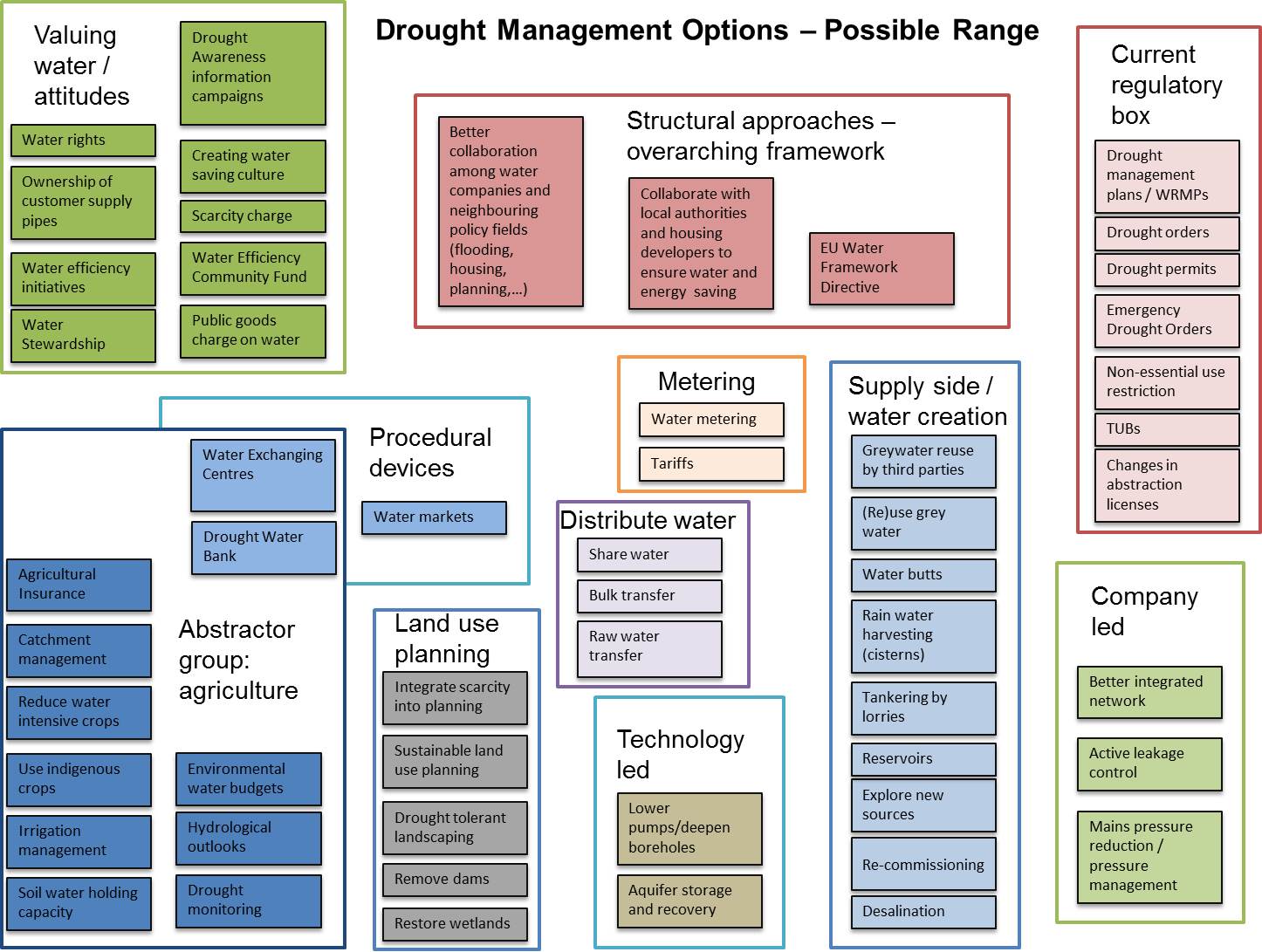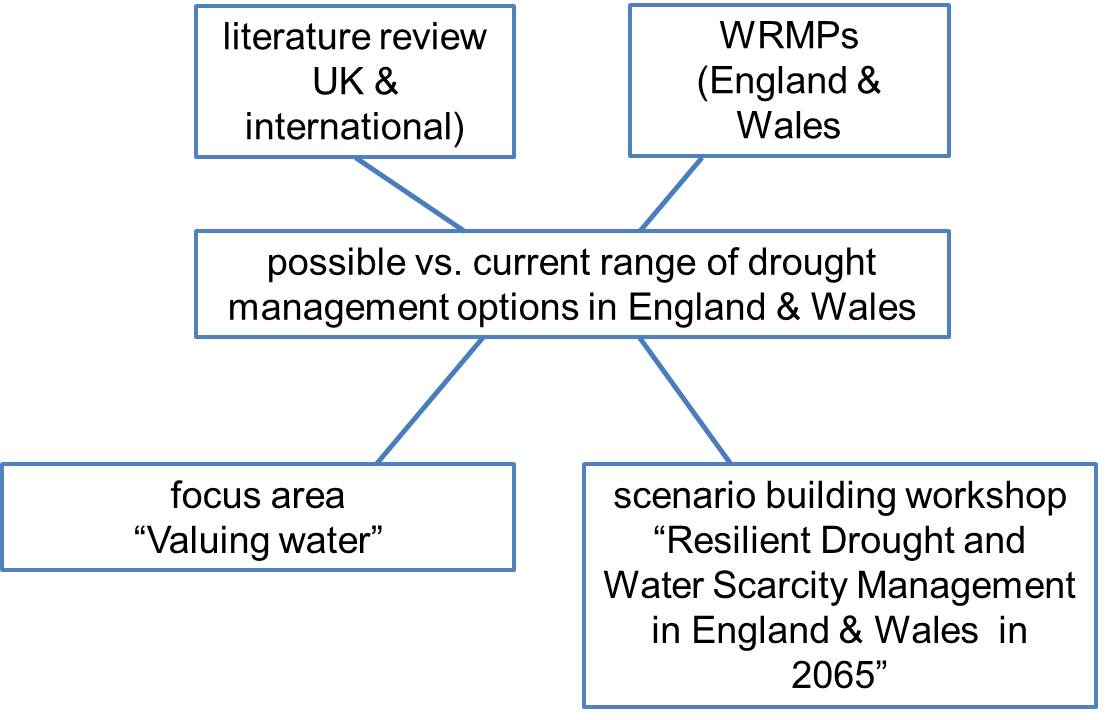Introduction
One element of the MaRIUS project is to explore and review options for drought management practice in England & Wales beyond the existing regulatory framework and to discuss qualitatively the potential effectiveness of and constraints upon these options.
The aim is to highlight existing drought management options in England & Wales while at the same time providing a, non-exhaustive, list of key drought management options from other countries, especially Spain, Australia, United States (California) and South Africa. The aim is furthermore to stress the social science aspect of options, i.e. comprehensively cover political, social, legal and economic and ecological factors/aspects of drought management.
Parallel to analysing national and international literature on drought management practice, a generic approach is taken to English and Welsh water companies’ Water Resources Management Plans (WRMPs) to look for themes, patterns and general observations with regard to drought management and water scarcity management options. Key questions are: Do regional differences exist? Where do water companies see themselves in the regulatory framework? Are there any innovative approaches? Is there a relation between being an area of severe water stress and innovativeness? How do they collaborate with neighbouring water companies and equally important how do they collaborate with neighbouring policy fields such as flooding, agriculture, forestry or planning?

Research methods
D2 social science research draws on qualitative empirical data generated by the research team and includes academic and grey literature, legislation, public policy documents and UK water companies’ Water Research Management Plans. The data are analysed using qualitative content analysis.

Synthesis and critical evaluation of drought management options


